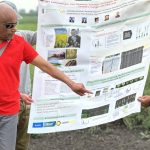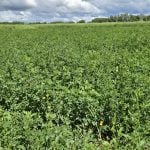Tag Archives crop research

Fusarium head blight mycotoxin detector in the works
Portable machine to identify contaminated kernels under development at the University of Saskatchewan

University of Manitoba hires potato researcher
Potato sustainability research chair joins school to lead its sustainability research efforts into the crop

Manitoba marks 100 years of building better crops
Manitoba has a rich history of crop breeding and disease management research that has helped shape Canadian agriculture as we know it

Verticillium may undermine canola blackleg resistance
Verticillium stripe may compromise blackleg resistance protection in canola, new research out of Manitoba suggests

Manitoba Parkland research station grapples with dry year
Drought conditions force researchers to pull the plug on some projects at the Parkland Crop Diversification Foundation

Grain commission must address research vacuum

Newly formed oilseeds organization introduced
SaskCanola and SaskFlax make their final presentations as SaskOilseeds gets to work representing producers’ interests
REGINA — SaskOilseeds took the stage as the newest provincial crop commission earlier this month, with the final presentations from SaskCanola and SaskFlax and the reveal of a new logo. The merger of the two was official Aug. 1, and after wrapping up some final financial transactions, the new entity has settled in to handle […] Read more
Fed funding for ag research is ‘ideological,’ says Tory MP

Cost of access to plant gene banks may increase
Proposed changes to international plant gene sharing treaty could could bring additional costs to researchers, farmers
Glacier FarmMedia – Plant breeders around the globe can freely access plant gene banks for development of new crop varieties under the Treaty on Plant Genetic Resources for Food and Agriculture. Proposed changes at the international level could make access — and future crop research — more costly. Who would pay that cost is not […] Read more



